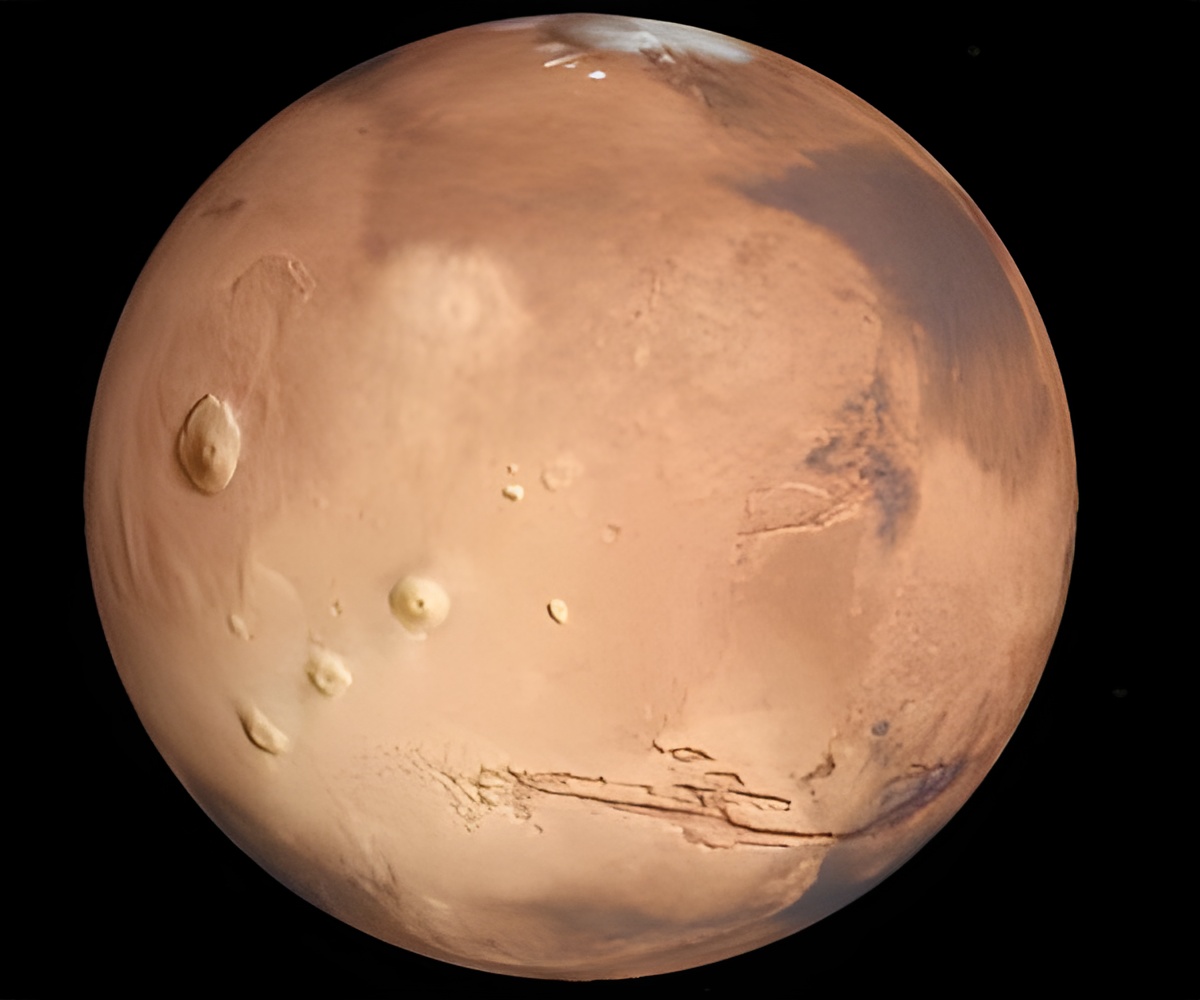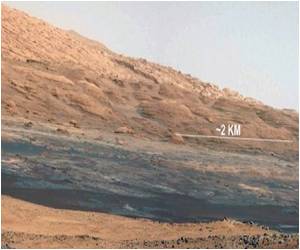NASA's Curiosity Rover traveled 5.5 miles and reached the base of central peak inside Gale Crater, Aeolis Mons also called Mount Sharp.

Mount Sharp stands about 3 miles (5 kilometers) tall, its lower flanks exposing hundreds of rock layers. The rock layers - alternating between lake, river and wind deposits-bear witness to the repeated filling and evaporation of a Martian lake much larger and longer-lasting than any previously examined close-up.
The researchers said that they are making headway in solving the mystery of Mount Sharp and there is a possibility that where there's now a mountain, there may have once been a series of lakes.
Curiosity currently is investigating the lowest sedimentary layers of Mount Sharp, a section of rock 500 feet (150 meters) high dubbed the Murray formation. Rivers carried sand and silt to the lake, depositing the sediments at the mouth of the river to form deltas similar to those found at river mouths on Earth. This cycle occurred over and over again.
After the Gale Crater filled to a height of at least a few hundred yards and the sediments hardened into rock, the accumulated layers of sediment were sculpted over time into a mountainous shape by wind erosion that carved away the material between the crater perimeter and what is now the edge of the mountain.
Curiosity science team member Sanjeev Gupta of Imperial College in London said that they found sedimentary rocks suggestive of small, ancient deltas stacked on top of one another and Curiosity crossed a boundary from an environment dominated by rivers to an environment dominated by lakes. (ANI)
Source-ANI
 MEDINDIA
MEDINDIA




 Email
Email








